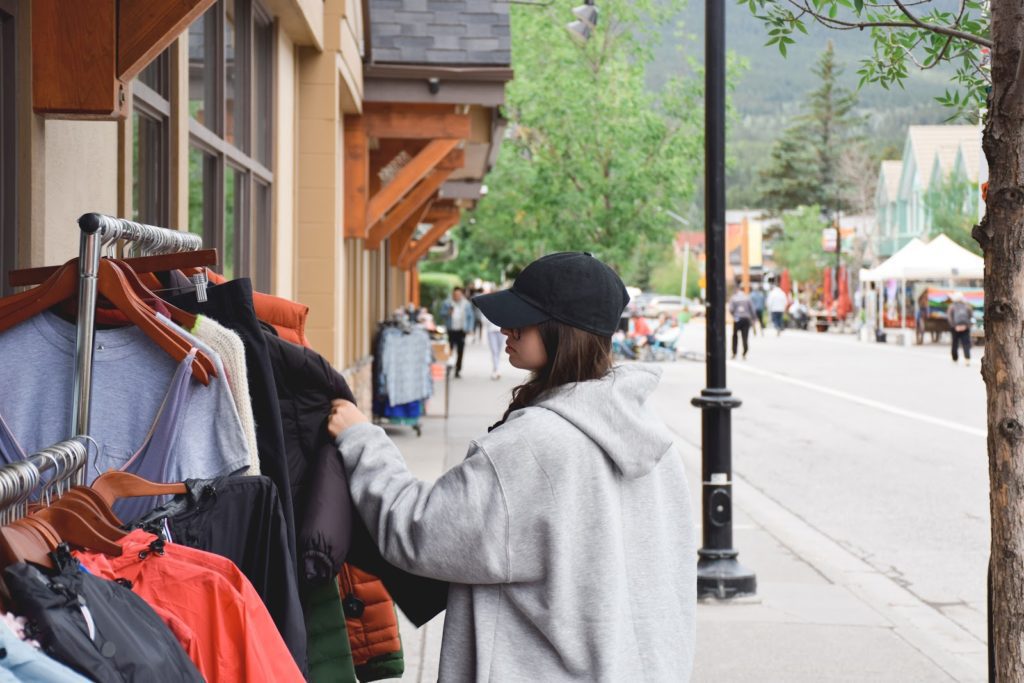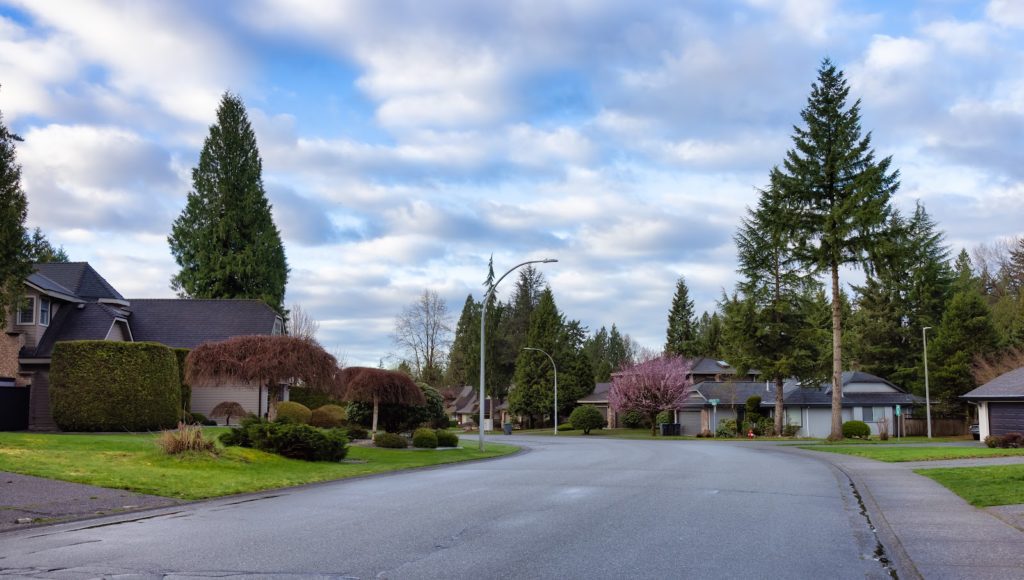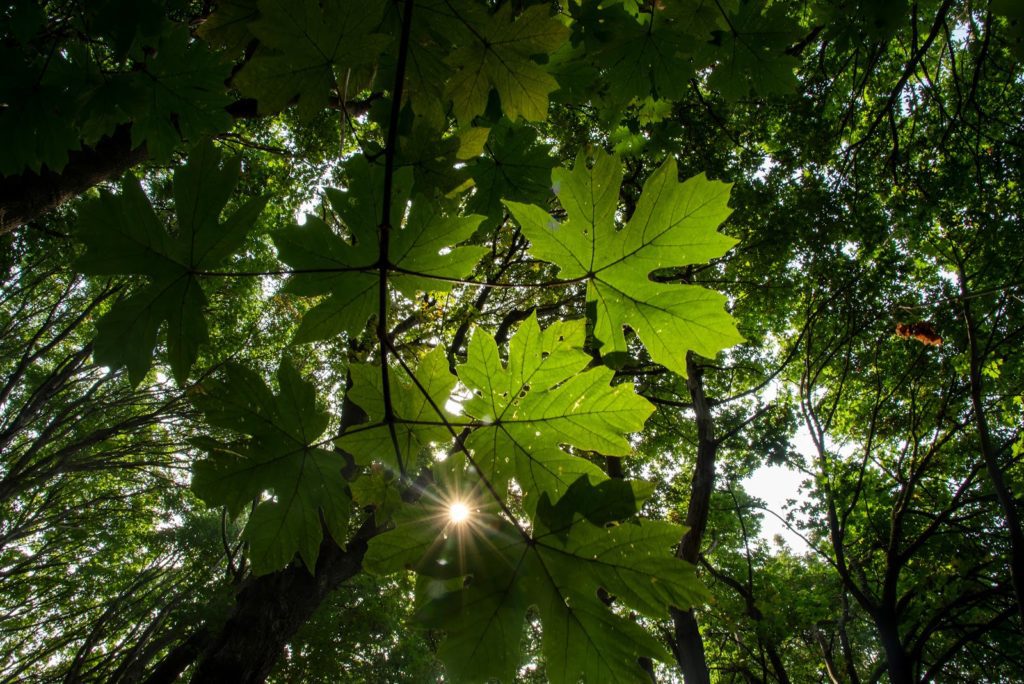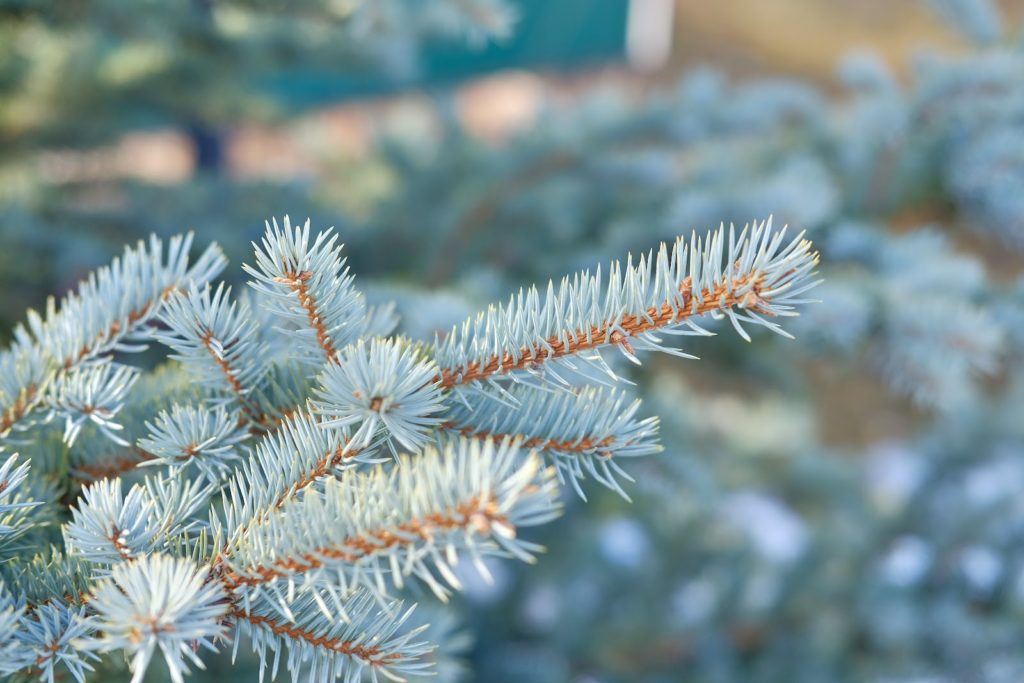July 17, 2022
Can you increase your property value by planting trees? The answer probably won’t surprise you.
Your commercial or residential real estate can benefit greatly from good landscaping. Trees are especially important to add land value. From ornamental to fruit-growing to privacy-providing species, trees can significantly improve the appearance, appeal, and use of a property.
How do we know? People have studied it.
Researchers have asked the questions: will any tree add value and if so, how much? If yes, which trees will give you the biggest bang for your bark when it comes to assessment value?
Let’s find out.
Do trees really increase property value?

Yes!—money really does grow on trees (sort of).
Where residential lots are concerned, the appeal of trees is unmistakable—beautiful landscaping attracts buyers. Research shows that homes with trees are generally preferred to those without. These same studies reveal that:
- Appraisers factor in the quality and number of trees when assessing the value of a home.
- Appraisal values increase by 2-7% when trees are part of the deal.
- Trees can raise the average home’s price by more than $19,350—and that’s considered a conservative number.
- Mature trees in affluent neighbourhoods can offer an even bigger boost: a price increase of anywhere between 10-15% to the value of a home.
- In general, landscaping increases the value of a property by 6-11%.
- Landscaping can bring up to a 200% return on investment, more than a bathroom or kitchen renovation.
Aside from assessment value, how else can trees add value to your property? Read on to find out.
Tangible ways trees offer property value

The addition of trees to a property offers tangible benefits above and beyond increased resale value. Here are 7 benefits to owning trees:
1. Energy savings
Trees reduce energy costs, plain and simple. When you add trees, you lower your electric bill.
- During the summer months, deciduous species provide shade and can help reduce building cooling costs.
- During the winter months, evergreen trees protect against wind and can lower heating costs.
It’s where trees are planted on a lot that make the biggest difference to your energy bill. Strategically placed trees can:
- Save you $180 or more annually on your energy bill,
- Reduce air conditioning needs by 30-56%, and
- Save you 20-50% on heating costs. This equates to a savings of anywhere between $100-250 per year.
2. Curb appeal

Turn heads by planting trees!
A commercial or residential property with healthy, beautiful mature trees simply looks better. A well-manicured lot with a variety of tree species adds to a lot’s charm and visual appeal.
Take the curb appeal to another level by planting for the seasons:
- Late summer berries on certain trees, like the mountain ash, add visual interest to your property that can last into the winter.
- Plant species that change colour in the fall. The vibrant fall foliage of ash, larch, and maple trees is especially striking.
3. Customer attraction

Great curb appeal extends beyond residential neighbourhoods.
Studies show that commercial properties and storefronts with beautiful landscaping and mature trees attract shoppers and tenants.
If you’re a commercial landlord, you can also demand higher lease rates.
4. Improved quality of life and wellbeing

A house or commercial building without landscaping is like a park without trees: it looks lifeless.
Trees enhance an owner’s quality of life and enjoyment of their property by:
- Offering a place to sit in the shade during the hot summer months—think oak trees,
- Providing a spot for birds and other wildlife to rest and nest,
- Giving off fragrant smells throughout the year,
- Acting as the perfect spot to hang a hammock or swing or build a treehouse,
- Offering privacy from the neighbours and passersby, and
- Absorbing noise to create a quiet sanctuary.
5. Trees give back by being environmentally-friendly
Over a tree’s lifespan of, say, 50 years, it can:
- Produce $31,250 worth of oxygen,
- Control $62,000 worth of air pollution,
- Recycle $37,500 worth of water, and
- Offer $31,250 worth of soil erosion prevention.
6. Fruit!

You can harvest the fruits of your labour by painting certain trees, pun intended.
The Canadian government even encourages Canadians to make their homes sustainable.
This includes producing their own food. A fruit bearing tree goes a long way toward making this happen. This is doubly true in the province of Alberta where climate makes it notoriously difficult to plant and harvest food at home.
Fruit trees also help people:
- Stay connected to the earth,
- Appreciate where food comes from,
- Understand the process of growing produce, and
- See beyond fast food and ready-made meals from the grocery store.
How do you like them apples?!
7. Crime reduction

Deter cat burglars—but maybe not outdoor housecats—by planting more trees.
Studies show trees prevent crime by signalling to potential thieves that a home is:
- Occupied,
- Well-looked after, and
- Monitored, perhaps even by an alarm system
The caveat: make sure your trees don’t obscure visibility. Yes, you want them to offer you privacy but not at the expense of helping someone to break into your home unnoticed.
The best trees for better resale

We’ve made the argument for why and how trees increase property value. Now it begs the question: do all tree species offer the same bang for their bark when it comes to boosting appraisal rates?
The short answer: No.
Sure, you can’t go wrong with planting more trees. Having said that, not all types of them will offer the same rate of return.
For example, a willow tree will end up being a liability once its root system grows to the point of damaging your building’s foundation, driveway, and underground pipes.
Generally speaking, the best types of trees for resale are ones that are:
- Healthy
- Mature
- Well-maintained and pruned—Trees with dead or broken branches are considered a risk to a property and will decrease your home’s value.
- Hardy—species that work best for your location and hardiness zone
- Durable and resilient—to environmental stressors, like drought and pests
- An appropriate size—make sure the tree’s crown and root system won’t get too large for the property,
- Low maintenance—if you can manage it, pick species that take less care, and
- Attractive—why plant a tree if it’s not going to look fantastic!
Now that we’ve covered the general characteristics of value-boosting trees, we’ll cover specific species next.
Boost your property value with these tree species

Yes, the species of tree matters when considering how to make the most money. We’ve divided these into two categories:
- Deciduous
- Coniferous
Without further ado, here are 11 tree species to plant to grow property value.
Deciduous Tree Species

We’ll start with deciduous trees, or species that drop their leaves in the fall.
1. Northern Red Oak (Quercus rubra)

Hardiness Zones: 3-8
We love oak trees for Alberta because they’re:
- Easily grown in most parts of the province,
- Long-lived,
- Quick growing,
- Low maintenance,
- Drought-tolerant,
- Attractive with a large-canopy and a rounded spread,
- Gorgeous especially in the fall when their foliage turns vibrant colours, and
- Able to support abundant amounts of wildlife—including birds, mammals, caterpillars, butterflies, and other types of pollinators.
As for the Northern Red Oak, we consider it a timeless shade beauty that tolerates nearly any soil type and wows with red fall colour.
2. Bur Oak (Quercus macrocarpa)

Hardiness Zones: 3-8
The bur oak is a majestic deciduous species that can reach a height and spread of up to 90 feet. Only plant one if you have the room! Those with smaller properties should not consider a bur oak.
If you’re lucky enough to have a larger lot, however, we highly recommend a burr oak. It has gorgeous oblong leaves and fall foliage and its deeply ridged grey bark is a showstopper, especially during the winter.
3. White Oak (Quercus alba)

Hardiness Zones: 3-9
The white oak is pretty in all seasons. From showy red and burgundy leaves in the fall to long, yellow-green catkins in the spring, this variety of deciduous tree will captivate throughout the year.
This tree isn’t for the non-committal, though. It can live for centuries and will become an invaluable addition to any lot.
4. Common lilac (Syringa vulgaris)

Hardiness Zones: 3-7
The common lilac is a popular ornamental choice that’s low-maintenance.
Its prized fragrant blooms, cold-tolerance, and ability to propagate are all pluses. Want a second lilac? Cut off a shoot and replant it somewhere else. Done properly and you’ll end up with another healthy tree.
5. Sugar Maple (Acer saccharum)

Hardiness Zones: 5-8
The dense crown of a quick-growing maple tree is a shade-lover’s dream.
Another advantage of maples is their sturdiness. They have a large root system which makes them ideal for Alberta. They can withstand cold, wind, heat, and pests.
In the fall, the sugar maple shines—literally—by its display of stunning yellow, burnt orange, and red foliage. It also impresses with its small, greenish-yellow flowers in the spring.
6. Red Maple (Acer rubrum)

Hardiness Zones: 3-9
The red maple offers beauty in every season:
- From winter to spring, it produces clusters of small pretty flowers.
- In late spring, its winged seeds ripen until they’re shed in the fall.
- When they’re dropped, their seeds spin through the air like mini helicopters.
- In the fall, its foliage turns vibrant red.
7. Crabapple (Malus spp.)

Hardiness Zones: 2-8
Another popular, fragrant choice of Albertans is the crabapple tree.
The easiest tree on the list to grow, you can plant it anywhere in a yard in any type of soil in any type of lighting conditions.
Known for its showy, long-lasting spring blooms, the crabapple acts as a cross-pollinator when planted near other fruit-bearing trees, like an apple tree.
8. American Elm (Ulmus americana)

Hardiness Zones: 2-9
Elm trees love heat as much as they tolerate the cold. Consider elm trees one of the most versatile species to grow in Alberta.
Like oak trees, elms grow to a large size. Their 40-50 foot height and wide crown make them perfect shade trees. Plant them only in areas that can take their majestic size.
Coniferous Tree Species

Now that we’ve covered deciduous trees, we’ll introduce you to a few coniferous, or needle-bearing, species.
Our three favourites are:
- The fir,
- The larch, and
- The spruce.
9. White Fir (Abies concolor)

Hardiness Zone: 3-8
Like oak and elm trees, the white fir is another shade-providing choice.
When planted together, a stand of fir trees also adds privacy and protects from noise pollution.
The fir is also:
- Incredibly low-maintenance,
- Tolerates cold and warm weather,
- Requires very little water,
- Attracts animals, and
- Offers the perfect spot for urban wildlife to nest and rest under.
10. Larch (Larix spp.)

Hardiness Zone: 2-7
Larches are one of the few coniferous species that drop their needles in the fall. This makes them extremely cold tolerant because their needles can’t be damaged by the cold.
Before they drop their needles, though, larches turn yellow-cold in autumn.
11. Colorado Blue Spruce (Picea pungens)

Hardiness Zone: 2-7
This slow-growing spruce is native to the Rocky Mountains, where it reaches heights of 30 to 60 feet.
You’ll recognize the Colorado blue spruce because it’s a favourite of holiday decorating and landscaped Alberta backyards.
Its pyramid shape, silvery-blue needle colour, and wonderful smell make it a popular choice for residential and commercial spaces.
Protect your property value by avoiding these types of trees

Now that we’ve covered which types of trees add value to your property, let’s cover what kinds can lower value.
A tree becomes a liability instead of an asset when it:
- Encroaches on power lines or hangs over a roof—pruning could easily fix this problem,
- Blocks out too much natural light,
- Is dead or dying—removal of these hazardous trees can solve the issue,
- Has a cracked truck,
- Is a non-native or invasive species,
- Is pest-ridden or diseased—unless it can be treated,
- Requires a lot of maintenance, or
- Is planted within five metres of a home—because it could be deemed a liability.
In other words, when a tree is an eyesore, or when it poses a health or safety risk, it hurts resale.
In any of the above circumstances, cutting down, pruning, or having the tree removed may be what’s needed to boost property value.
If you’re not sure of whether or not a tree should be kept, have it assessed by a professional arborist.
How to choose the right trees for your property

When choosing the right trees for your property, it’s best to work with an expert.
A professional arborist can easily walk you through the best options for your lot, climate, goals for your landscaping, and the look you want to achieve.
Increase Property Value With Trees: Tree Services and Removal In Alberta & Saskatchewan

If we haven’t sold you trees as a solid financial investment, consider that simply looking at a tree can reduce stress in fifteen minutes.
Never underestimate the value of trees. When planted well and in the right place they can offer psychological and financial benefits for decades.
Contact Pevach about increasing your property value with trees. For over 30 years, we’ve specialised in tree removal, tree pruning, and other types of tree services.
For a free estimate or to schedule a service appointment in Bonnyville, Meadow Lake, or other communities in the Lakeland region of Alberta and nearby Saskatchewan, contact us today.
